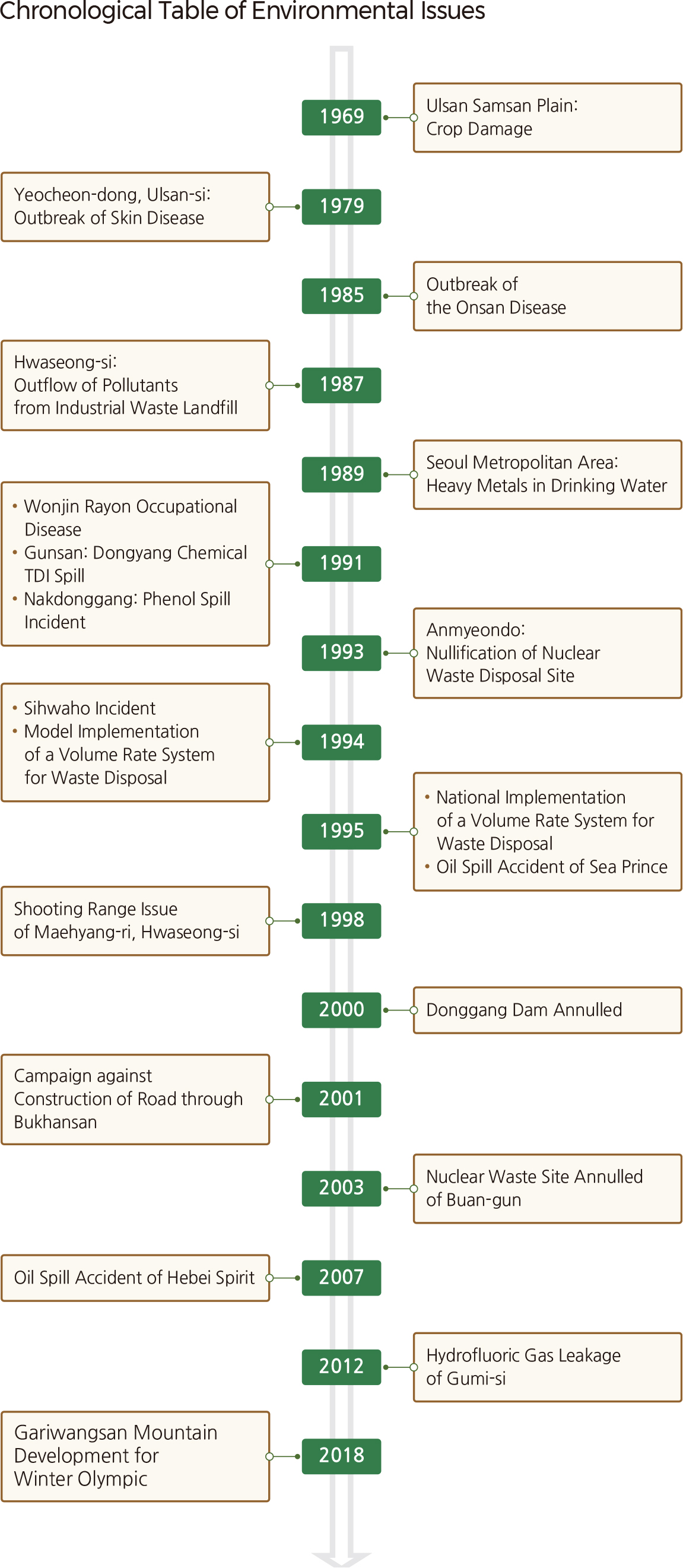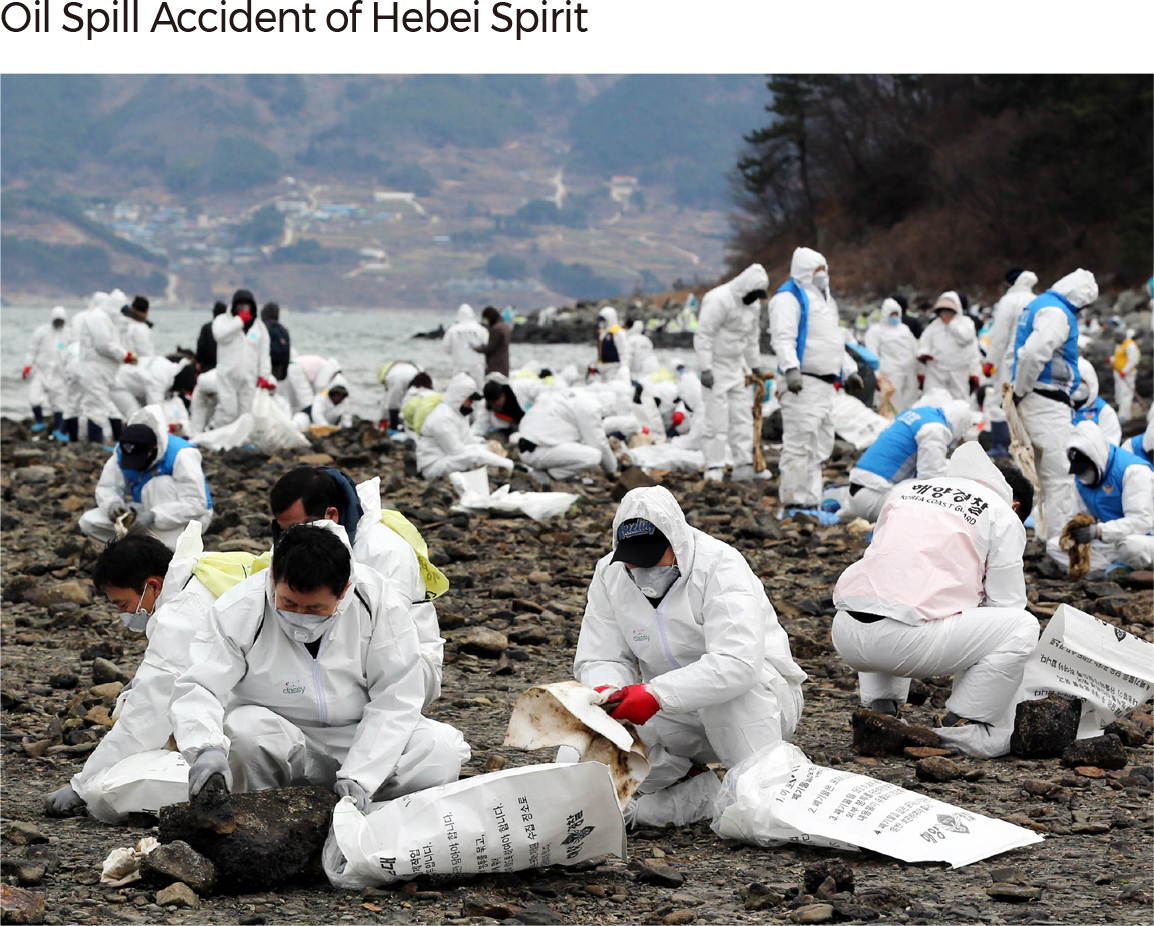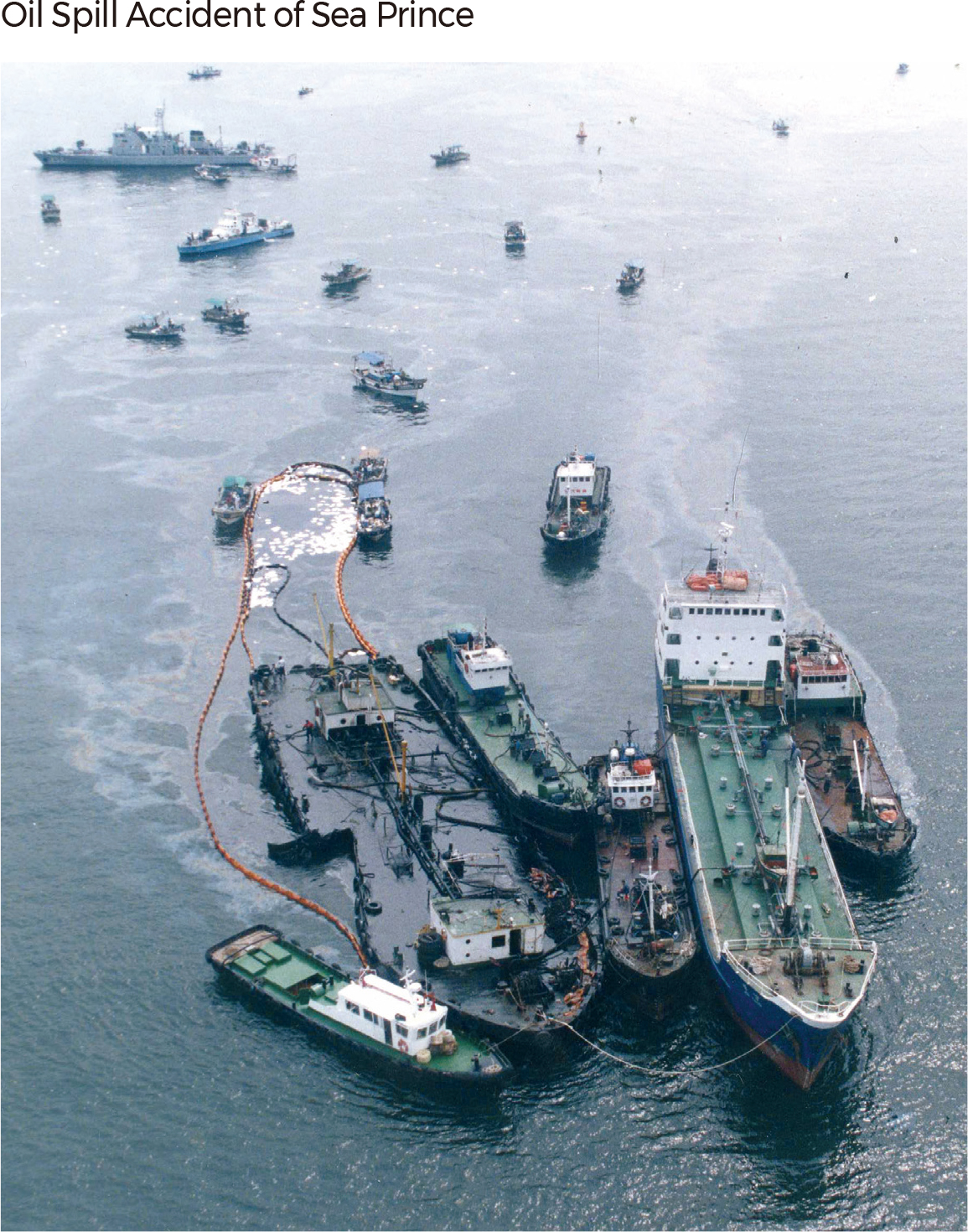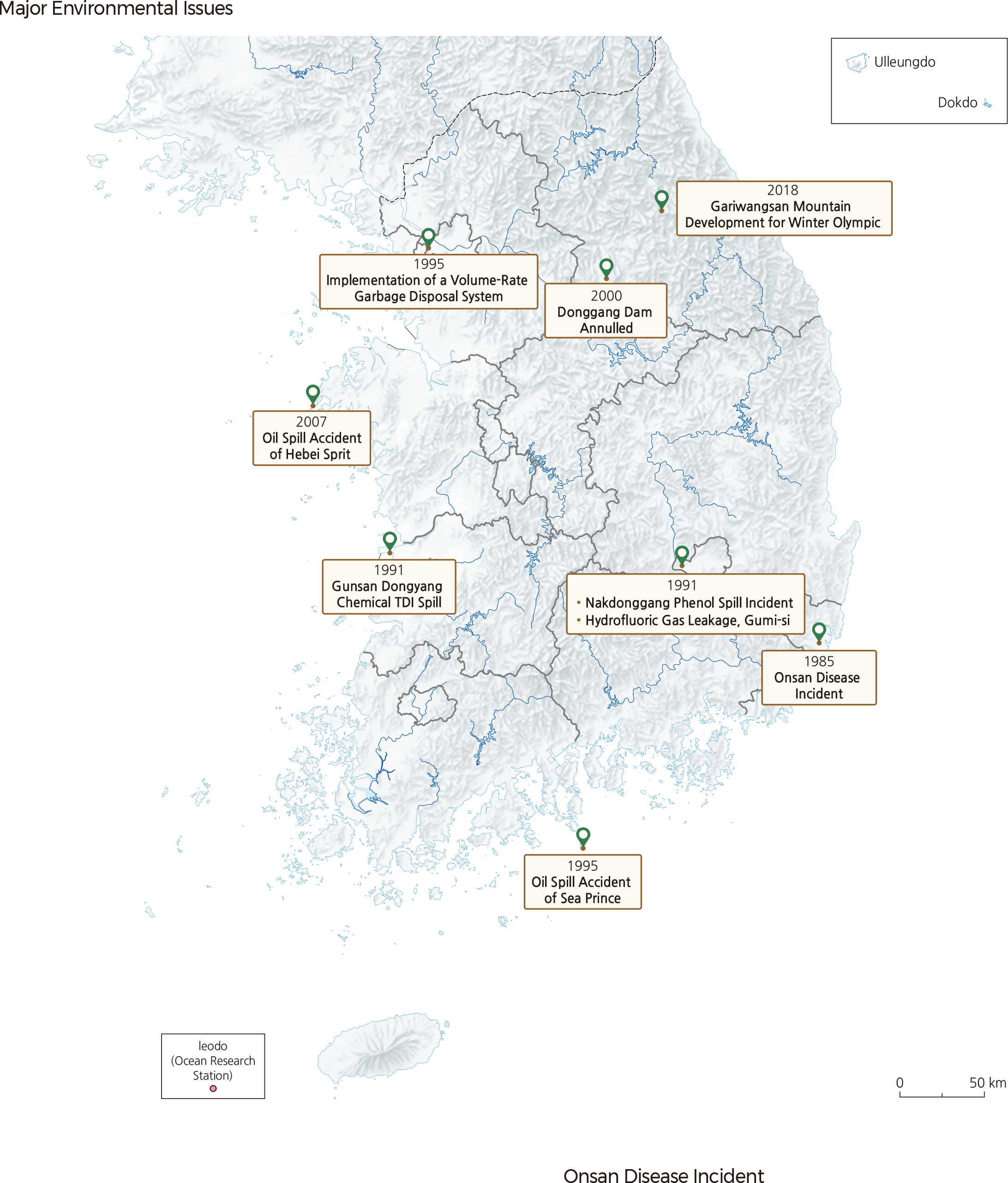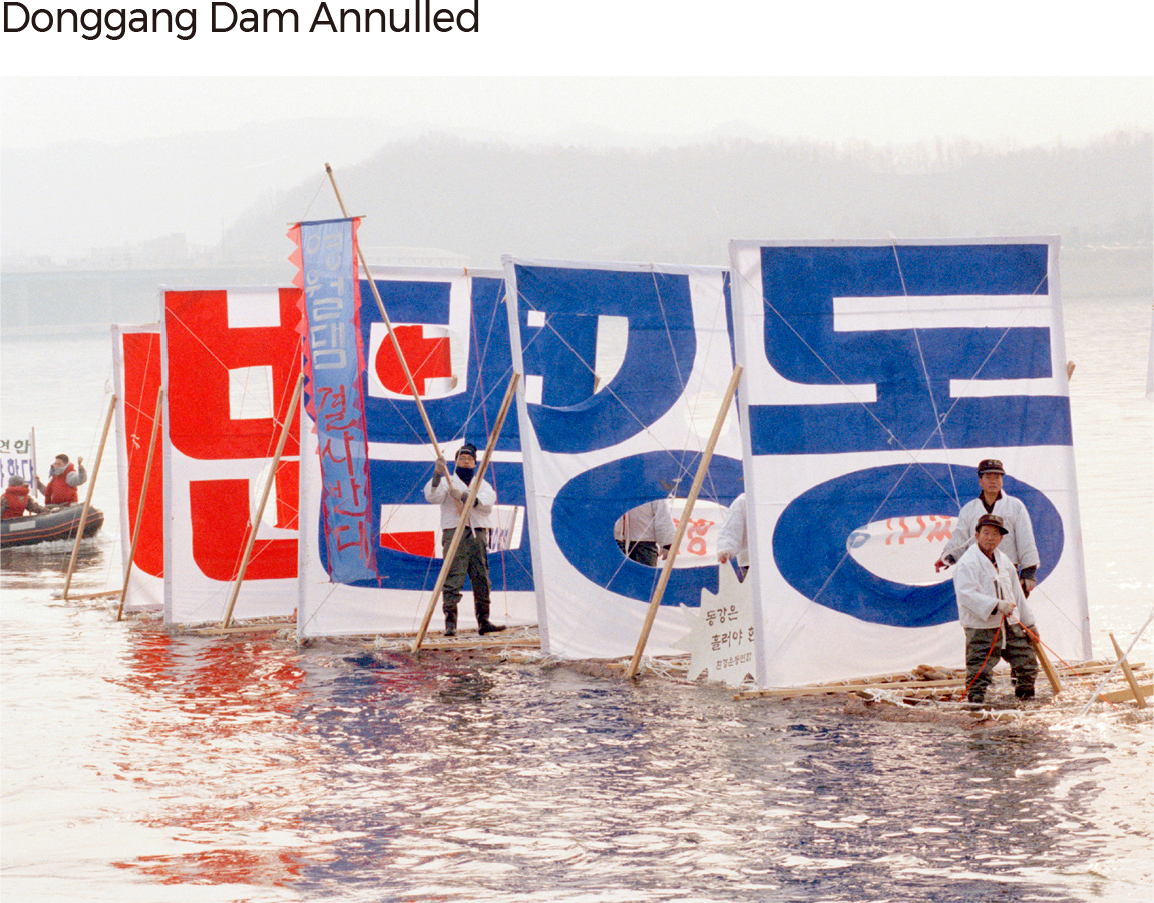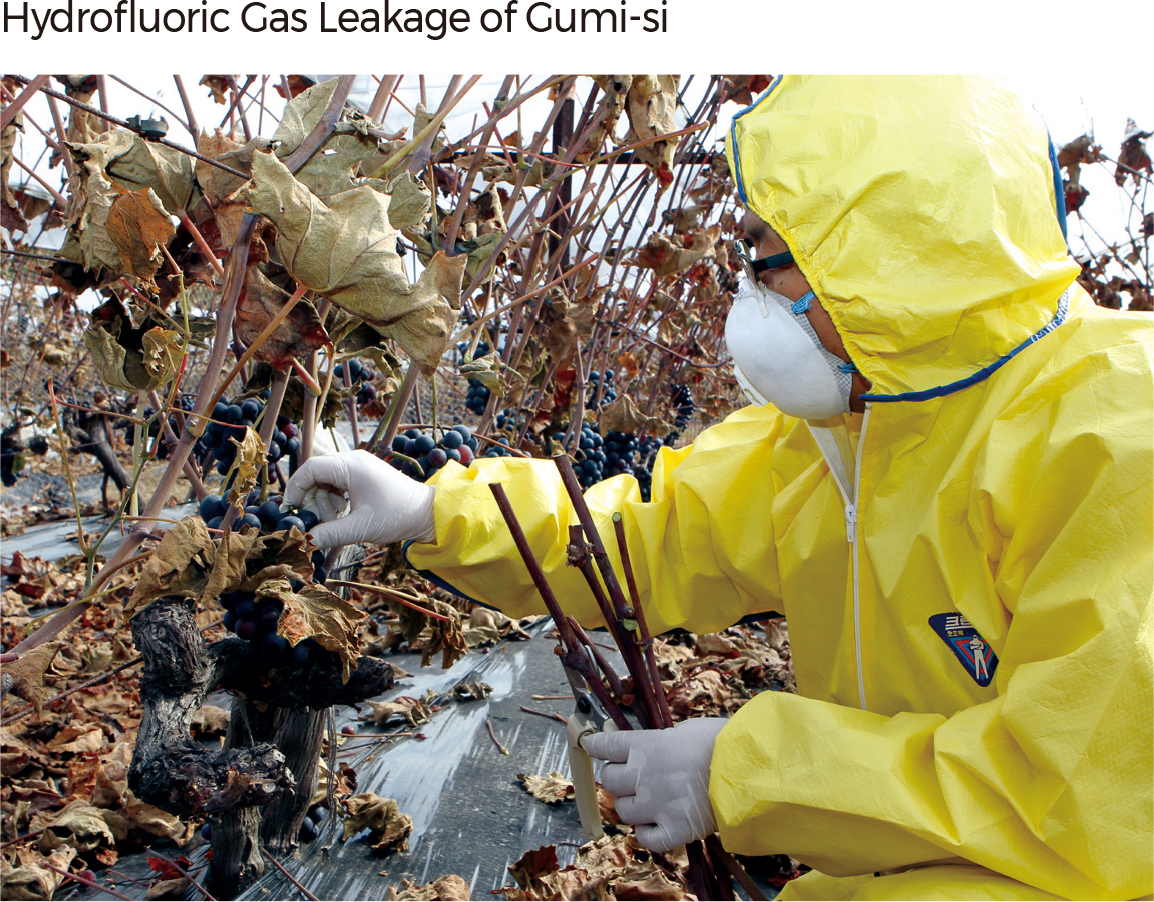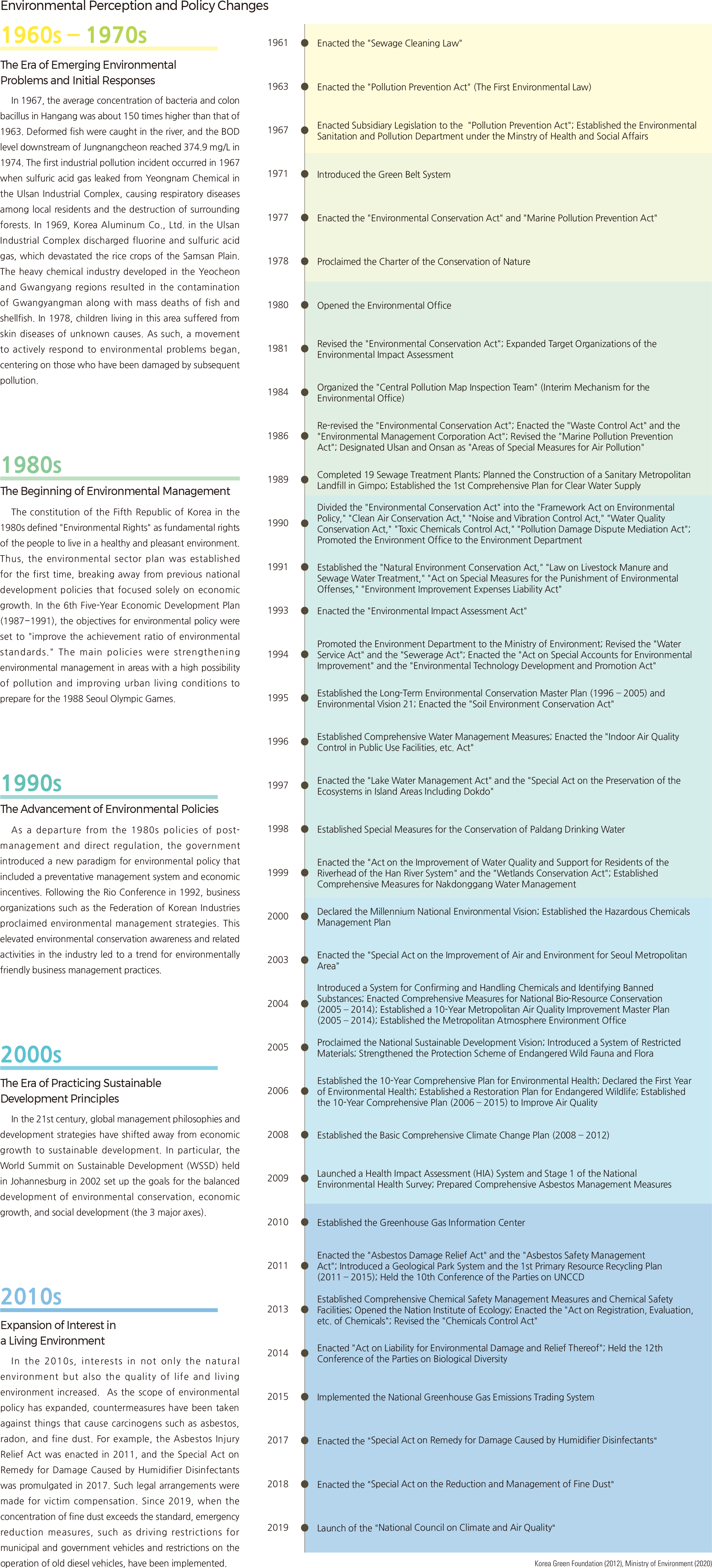English II 2020
The Heibei Spirit oil spill (also known as the Taean oil spill) occurred on December 7, 2007, when the Heibei Spirit, a Hong-Kong-registered oil tanker, collided with a barge owned by Samsung C&T Corporation off the coast of Taean-gun, Chungcheongnam-do. As a result, 78,918 barrels of crude oil leaked into the waters, spreading out across the entire western coastal area. The Korean government declared six regions in Chungcheongnam-do as special disaster areas and enacted a special act. Meanwhile, about 2 million volunteers took part in the efforts to clean up the crude oil spillage.
Implementation of a Volume-Rate Garbage Disposal System
The volume-rate garbage disposal system was implemented in January 1995 as part of a waste minimization policy. It was introduced to reduce the amount of garbage generation and to promote the separate disposal of recyclable wastes. The system was based on the polluter-pays principle, under which liabilities are proportional to the amount of disposed waste. Although the system has managed to achieve the desired outcomes—reduced garbage disposal and increased recycling rates—problems such as illegal incineration and dumping of wastes have also emerged.
Winter Olympics Ski Resort Construction and Gariwangsan Mountain Development
Gariwang Mountain, located in Jeongseon, started to be developed in 2013 to build the alpine ski resort for the 2018 Pyeongchang Winter Olympics. During development, 78.3ha, approximately 3% of the total land area of Gariwang Mountain, was destroyed. The side in favor of the development argued that Gariwang Mountain was the only place that met the conditions of the stadium proposed by the International Ski Federation. On the other hand, opposing parties emphasized that Gariwang Mountain is a primeval forest preserved for over 500 years. As of 2020, two years after the Winter Olympics, the conflict over restoration and preservation continues.
Gunsan Dongyang Chemical Toluene Diisocyanate (TDI) Spill
On September 7, 1991, concentrated waste fluids were leaked from Dongyang Chemical plants located in Gunsan-si due to the inexperienced operation of water sealing tanks. Substances assumed to be toluene diamine (TDA) and Tar were discharged along with hydrogen and water vapor. The leak resulted in the pollution of surrounding areas, thus triggering an environmental movement for the demolition of the chemical plants. Along with the Nakdonggang phenol spill, this incident was the driving force behind an early settlement in policies concerning hazardous substance management.
On July 23, 1995, the Sea Prince oil spill occurred 8 km east of Nam-myeon, Yeocheon-gun, and Jeollanam-do. While attempting to evade the A-class typhoon, Faye, the Sea Prince (a Cypriot crude oil tanker) collided with Jakdo Island, causing consecutive explosions that damaged the engine room, the engine, and the bridge. The tanker eventually ran aground on Sorado, about 8 km west of Jakdo. The accident resulted in 5,000 tons of bunker A/C oil and crude oil being spilled, polluting 3,295 ha of ocean and 73 km of shoreline. This incident called attention to the grave repercussions of marine pollution and showed the urgent need to establish a response system for domestic marine pollution accidents.
Onsan Disease Incident
Onsan disease, the first pollution-related disease outbreak in Korea, stems from the Onsan National Industrial Complex constructed near Onsan-eup, Ulju-gun, and Ulsan-si in 1974. Local residents living near the complex of refinement plants for nonferrous metals began to show unusual health symptoms in the early 1980s. The incident gained public attention through media coverage in 1985, and vigorous local environmental movements led the government to officially recognize the harmful consequences of pollution. Beginning in 1986, the government designated the complex and its surrounding areas as a special countermeasure area to pollution and relocated the residents.
The government officially designated the proposed site for the construction of Donggang Dam in September 1997, which received a public objection from environmental movement organizations. The Ministry of Construction and Transportation and Korea Water Resources Corporation (K-water) strongly argued for the inevitability of the construction, and the rift between local residents, municipalities, and environmental movement groups only deepened through debates. In August 1998, the Ministry of Environment expressed concerns about the potential degradation of water quality due to the construction of the dam. It became a global environmental issue, wherein Greenpeace and the Sierra Club sent a clear message of objection to the Korean government. Consequently, a special investigation unit was organized to examine the validity of the Donggang Dam construction. The unit split up into subgroups and led research on water supply and demand, floods, dam security, environment, and culture. The conclusion drawn from the research was in favor of preservation, and in August 1999, even the President made a declaration against the construction. As a result, the plan for Donggang Dam was annulled, and the Donggang watershed was designated as an ecosystem reserve. This paved the way for the transition from controlling and using water to managing water at an ecosystem/environmental conservation level.
Nakdonggang Phenol Spill Incident
The first phenol pollution occurred on March 16, 1991, when underground pipes ruptured and spilled 30 tons of crude phenol at a Doosan Electronics plant in Gumi-si, Gyeongsangbuk-do. The leaked phenol was discharged into the Dasa intake station, which served as the source of drinking water for almost all areas of Daegu. Some residents suffered from headaches and vomiting due to the contamination. The second phenol pollution incident happened on April 22 of the same year, merely five days after Doosan resumed operations. Poor construction caused phenol tanks to burst, and crude phenol was leaked into Nakdonggang. Not only did the crisis disrupt the supply of drinking water in Daegu, but it also affected all areas of Yeongnam, including Milyang, Haman, Busan, and Masan. Concerns were raised over the effectiveness of the inspection criteria for drinking water standards and consequently triggered the enactment of the Act on Special Measures for the Control of Environmental Offenses.
On September 27, 2012, hydrofluoric gas was leaked from Hube Global plants located in the 4th National Industrial Complex in Gumi-si, Gyeongsanbuk-do. The accident resulted in 23 casualties and also caused extensive damage to humans, animals, and plants in neighboring towns. The incident highlighted the lack of national response capacity for chemical accidents or disasters. |
